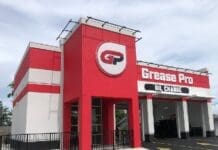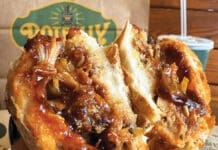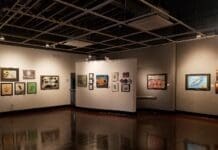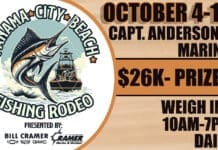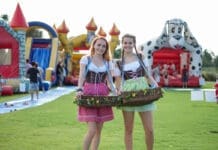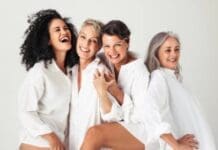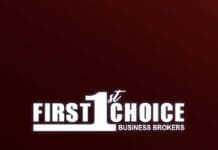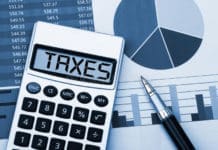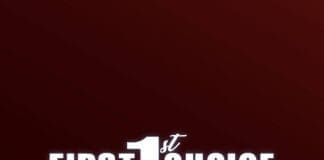By Jamie Zimchek, Editor
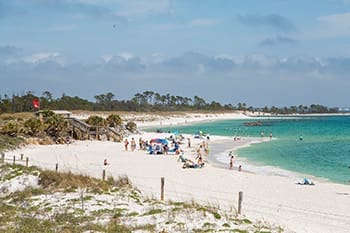 Anyone who’s had the opportunity post-Hurricane Michael to visit St. Andrews State Park, a scenic retreat fronting over a mile of stunning Gulf of Mexico coastline, would find a number of changes. For one, there are fewer trees in its forested area. More startling is the way one of the jetties, which previously defined a significant portion of the Kiddie Pool’s boundary, has appeared to sink, and in spots, totally disappeared beneath the waves. The Kiddie Pool, a protected area on the St. Andrews Bay side of the park, is a popular spot with both children and snorkelers. Years ago, it was encircled fully by a rock jetty that largely blocked incoming waves and worrisome undercurrents. Today, an ever-deepening trench – now 70 feet deep in places – has swallowed up a good chunk of it. Furthermore, where this section of jetty meets the beach, the sand now tumbles precipitously down a steep slope in a most child-unfriendly way. The good news? The Army Corps of Engineers is hard at work on solutions to these problems (while making sure the delightful raccoon family that calls the jetty home is still safe and sound).
Anyone who’s had the opportunity post-Hurricane Michael to visit St. Andrews State Park, a scenic retreat fronting over a mile of stunning Gulf of Mexico coastline, would find a number of changes. For one, there are fewer trees in its forested area. More startling is the way one of the jetties, which previously defined a significant portion of the Kiddie Pool’s boundary, has appeared to sink, and in spots, totally disappeared beneath the waves. The Kiddie Pool, a protected area on the St. Andrews Bay side of the park, is a popular spot with both children and snorkelers. Years ago, it was encircled fully by a rock jetty that largely blocked incoming waves and worrisome undercurrents. Today, an ever-deepening trench – now 70 feet deep in places – has swallowed up a good chunk of it. Furthermore, where this section of jetty meets the beach, the sand now tumbles precipitously down a steep slope in a most child-unfriendly way. The good news? The Army Corps of Engineers is hard at work on solutions to these problems (while making sure the delightful raccoon family that calls the jetty home is still safe and sound).
It’s not just the Kiddie Pool that took a hit in the hurricane though. Less detectable to the naked, non-engineer eye is the damage done to the main jetties protecting the St. Andrews Bay Inlet. Pre-hurricane, these jetties were already in need of some work; post-Michael the damage was far more drastic. Providing reliable ingress and egress to the bay, this inlet was built in the 1930s as a permanent alternative to the ever-shifting (and now nonexistent) inlet farther east that once made Shell Island an actual island. Now, the inlet is an important point of entry for vessels headed to ports around the bay, including cruise ships soon destined for a stop at St. Andrews. Beyond that, St. Andrews Bay offers access to West Bay and the Intracoastal Waterway, which in turn connects to ports west as far as Texas, including the Mississippi River, and east (and south) to San Carlos Bay near Punta Rassa, Florida.
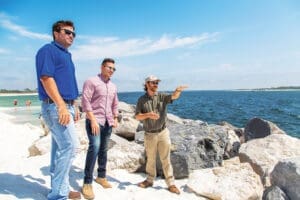 Enter the US Army Corps of Engineers (USACE) Panama City Site office. Covering roughly a 100 mile radius from Panama City, their Area of Responsibility includes Pensacola Harbor, the Escambia River, East Pass, Panama City Harbor – the list goes on – as well as maintenance for the Gulf Intracoastal Waterway. In addition to keeping channels open and ports humming, USACE also is charged with beach reconstruction and erosion protection projects. In the case of the St. Andrews Bay Inlet, USACE has been tasked with the Jetty Project, an ongoing effort to rebuild and strengthen both of the inlet jetties as well as provide a fix for the Kiddie Pool situation. Slated for completion later this year, this project requires complicated boulder-moving ballet. Granite chunks of the 2-4 ton variety were blasted from a Kentucky quarry, then transported to the project site by barge down the Mississippi via the Intracoastal. Why granite? “Granite is a very hard, strong rock,” explains Waylon Register, the Site Manager for this project and for the Army Corps of Engineers in Panama City. “It doesn’t dissolve. It’s all very dense and heavy.” He notes with admiration the skill with which the barge’s excavator operator carefully maneuvers these mammoth rocks into Tetris-like positions, finding just the right shape and size for a specific spot (no easy task with ought but a backhoe bucket for finessing).
Enter the US Army Corps of Engineers (USACE) Panama City Site office. Covering roughly a 100 mile radius from Panama City, their Area of Responsibility includes Pensacola Harbor, the Escambia River, East Pass, Panama City Harbor – the list goes on – as well as maintenance for the Gulf Intracoastal Waterway. In addition to keeping channels open and ports humming, USACE also is charged with beach reconstruction and erosion protection projects. In the case of the St. Andrews Bay Inlet, USACE has been tasked with the Jetty Project, an ongoing effort to rebuild and strengthen both of the inlet jetties as well as provide a fix for the Kiddie Pool situation. Slated for completion later this year, this project requires complicated boulder-moving ballet. Granite chunks of the 2-4 ton variety were blasted from a Kentucky quarry, then transported to the project site by barge down the Mississippi via the Intracoastal. Why granite? “Granite is a very hard, strong rock,” explains Waylon Register, the Site Manager for this project and for the Army Corps of Engineers in Panama City. “It doesn’t dissolve. It’s all very dense and heavy.” He notes with admiration the skill with which the barge’s excavator operator carefully maneuvers these mammoth rocks into Tetris-like positions, finding just the right shape and size for a specific spot (no easy task with ought but a backhoe bucket for finessing).
On the west side, this will amount to approximately 19,000 tons of rock, according to Ali Abbas, Projects Engineer. The Shell Island jetty, with a mere 11,000 tons of additional rock, is already well on its way to completion, although rough seas can bedevil the process and force delays. In the next few months, work will also begin on the Kiddie Pool jetty. “This will help stop erosion,” explains Register. “It restores that breakwater effect, and it will block waves from eroding the shoreline.” Though this will mean that select areas of this popular swim zone will be blocked off, by and large it will remain open, with the sight of a barge excavator and rock maneuvering for extra entertainment (no charge for this rock performance). Because of the yawning trench on the outside of the remaining jetty rocks, Register says they’ll be adding a secondary jetty on the inside of the old one, to prevent newly added granite from slipping right into the deep trench.
What about the vulnerable sandy hill and beach facing the gulf? Besides work on the jetties, the project also includes the addition of a finger dike that will run in an arc underneath the sand from roughly the west Gulf-facing jetty over northeast towards the walkway, like a big rocky backbone. This granite spine will help hold the beach in place should further hurricanes roll through the area. The process will require moving some of the sand, placing new rock, then burying the rocks with sand. Hurricane Michael previously washed some of this beach sand away, which required replacing it with matching sand from a spot some way offshore. Normally, this is a straight-forward process, although back in 2006, the team was startled to find 50 caliber bullets (powder still dry they discovered later) shooting out with the new sand when they were working on a beach renovation project several miles west of the park. No one was injured, and EOD techs dispatched were easily able to remove the live ammunition, but it offered an intriguing glimpse of the secrets that lie buried in the Gulf (and serves as a reminder to dispose of ammo somewhere other than these beautiful waters).
Importantly, in this, and other USACE ventures, impact to local flora and fauna is a real consideration, or as Register puts it, “How can we do it in a way that has the least impact on the environment?” In this case, the team includes shorebird monitor, Shelby Sutton. Sutton does daily patrols to ensure that the three shorebird species who nest between February and September are not disturbed. “I am responsible for monitoring shorebird species, American Oystercatchers, Snowy Plovers, and Wilson’s Plovers,” explains Sutton. “American Oystercatchers and the Snowy Plovers are listed as threatened in the state of Florida and the Wilson’s Plovers status is listed as a species of greatest conservation need.” On her daily route, she looks for “potential breeding adults, nests, or chicks and to ensure they do not become agitated throughout the construction process.” Seasonally, the team also enlists the services of a turtle monitor to avoid disturbing any sea turtle nests.
In short? St. Andrews State Park beaches are in good hands, and better fortified than ever should big winds blow this way anytime soon. Also, maritime traffic in and out of St. Andrews Bay will continue with business as usual, while the rest of us can rest easy knowing someone has the best interests of the birds, turtles, and St. Andrews State Park’s raccoon dynasty at heart as the project progresses.




